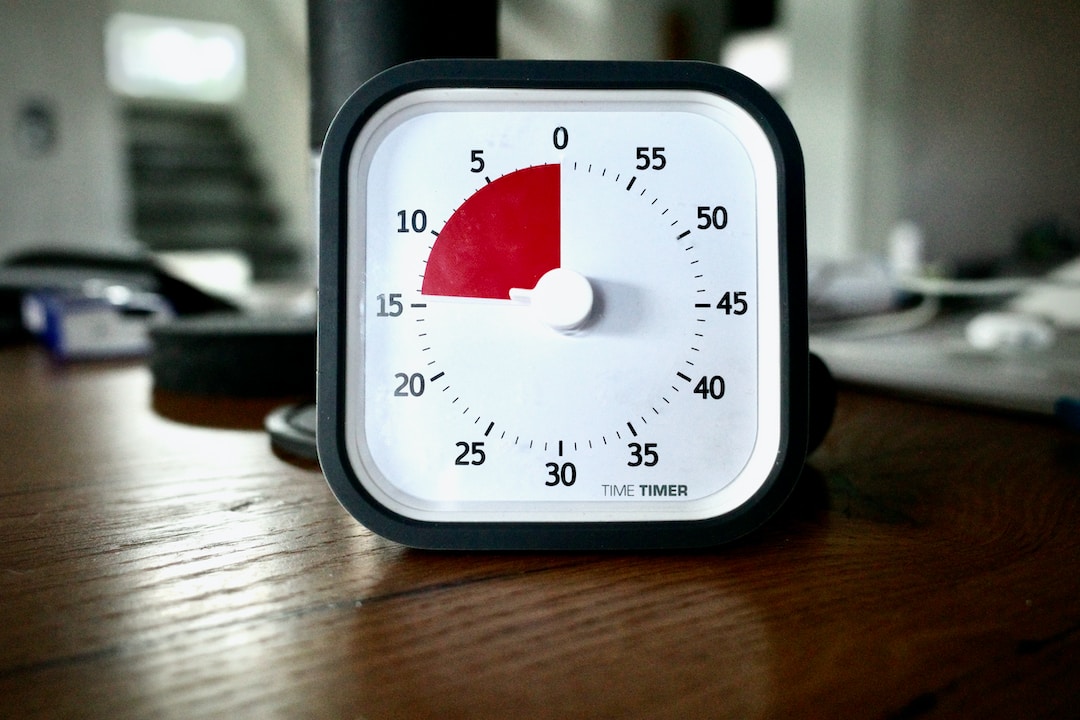
Some tasks are hard to complete, especially if you are freelancing, Or even doing routine and repetitive tasks, like cleaning the house or storage. If you have trouble getting things done, the Pomodoro technique, a great time management technique, can help you overcome distractions or over-focusing on details by breaking tasks into small chunks of time and rest. In between, get them done.
The most important and best feature of this technique is its ease. Suppose you have a busy job, such as content production or translation, where you are expected to sit behind your laptop for many hours and do work. In that case, this technique can be a great help in completing your tasks and managing time properly so that you can quickly Complete your work duties and have enough time for your personal affairs. In the following, we describe this technique in detail, and we want to see how you can apply it in the context of all your work and tasks.
What is the Pomodoro technique?
The Pomodoro technique was invented in the early 1990s by the famous entrepreneur and author Mr. Francesco Cirillo. Cirillo named the system after the tomato-shaped kitchen timer Pomodoro, which he used to schedule and manage his time as a student.
The procedure is simple; When faced with any enormous task or set of tasks, you should break the task down into short, timed intervals, each called a Pomodoro, with short breaks in between. It trains the brain to focus for short periods and helps you deliver work on time to deadlines. In addition, over time, it can even help to improve the range of attention and concentration.
Pomodoro is a cyclical system. By working in short time frames, you ensure that you are consistently and productively engaged in doing and completing tasks. In this system, you should also rest regularly so that your creativity is also maintained in addition to strengthening your motivation.
How does the Pomodoro technique work?
The Pomodoro technique is one of the simplest ways to increase productivity. All you need is a timer. Other than that, you don’t need any special programs, books, or tools; However, if you need more information on this technique, we’ll discuss plenty of books and articles later. Mr. Cirillo’s “Pomodoro Technique” book is practical, but he did not insist on buying or reading this book. Here’s how to get started with the Pomodoro technique in five steps;
- Determine what you want to do.
- Set the timer for 25 minutes.
- Start the task and keep doing it until the timer beeps. Then when the timer runs out and rings, make a mark on the paper.
- Take a short break (5 minutes is good).
- Take a more extended break for every four marks on the paper.
This “longer” break is usually 15-30 minutes, during which you do whatever it takes to regain the lost energy and be ready to start another 25-minute session. If you repeat this process a few times during a working day, you will get a lot done and have plenty of time to take a break to drink a cup of coffee or refill your water bottle or drink for the next 25 minutes.
It is also important to note that 25-minute units, or Pomodoros, are indivisible units; This means that if you are interrupted by a colleague, by a meeting, or any other emergency event before the 25-minute timer is up, you have two choices; Either you should stop the timer right then and start again later in 25 minutes, or you should continue working until the timer expires and postpone the emergency work. If you can do the latter, Cirillo suggests an “inform, negotiate, and call back” strategy:
- Inform the distracting agent (friend, colleague, etc.) that you are currently doing something.
- Set a time when you can deal with the issue in time.
- Call the other party when the 25-minute period is over, and you are ready to address the issue.
Of course, not all distractions are that simple, and some require immediate attention. But many times, you can say to your co-worker, “I’m working on something right now, but I’ll be quiet in ten minutes.” Not only does this prevent unnecessary conflict, but it also keeps you in control of your projects and workday.
Since a timer is the only necessary tool to perform the Pomodoro technique, you can use this technique by installing a timer app on your phone or by using a stopwatch or even a cooking timer. Mr. Cirillo preferred a manual timer and believed that winding the timer was like making a will and deciding to do something. However, we’ve reviewed a few examples of Pomodoro apps with more features than a simple timer, so if you find them useful, try them out.

Marinara Timer Web Application: You can open this online timer in a tab in your browser, then pin that tab always to have access to it. This app lets you choose your timer alerts to know when you should work and rest. This program has high flexibility, and you don’t have to install anything to use it.
Tonight Application: this Pomodoro timer application can be installed on all operating systems. After running and setting this timer, you can close this app; then, the app will open again at the predetermined time with a ringing sound. This app follows the Pomodoro scheduling rules by default but can still customize and change the schedule.
Eggcellent Application: combines a Pomodoro timer and a task management program. The app uses more visual cues to announce the completion of tasks and suggest what you need to do next. Additionally, you can estimate how many Pomodoros (time) you need to complete a task and track your progress accordingly.
Focus Timer Application: this timer has many features and unique features designed for the iOS operating system. You can set your work and rest periods, review your work history to see how much your focus has improved, quickly view your remaining work time, and use a ranking system based on Rate the number of stars and the quality of your work. In addition, you can customize the app’s sounds to your liking and set the app so that when you lock your phone, you will hear the clock’s ticking sound to keep you focused.
These were just a few excellent and valuable tools for using the Pomodoro technique. Additionally, you can use Google as a timer or try anything else you want, but remember that the Pomodoro method focuses on doing the work, not the timer being used.
Who is this technique more suitable for?
The Pomodoro technique is often used by programmers, designers, and others who must deliver creative work regularly and for people who need to produce something to be reviewed by others. This means that everyone, from authors working on their books to software engineers working on a video game, can benefit from Pomodoro’s system for scheduling work sessions and timed breaks.
However, this technique is also helpful for people who do not have such strict career goals. Anyone else who constantly has to study or read different materials can also use it. If you are a computer engineer and need to check and respond to many tickets, you can set a timer and work through it until it expires. After that, it’s time to rest. When the break ends, you return and continue where you left off or start a new set of tickets.
If you’re an artist, frequent breaks also allow you to take a break from the creative process to review your work, think about the next steps, and ensure you don’t get tired of working this way. The Pomodoro technique can be adapted to almost any type of work and activity, and you can use it in all fields of study and work.
Finally, it’s important to remember that the Pomodoro Technique is a productivity-enhancing system, not a set of cumbersome rules designed to limit you. The purpose of this system is to help you get into the task phase and focus, as well as to remind you to rest and recharge between tasks. Regular breaks are critical to increasing productivity. Also, remember that the Pomodoro technique is just one of thousands of methods that may or may not work for you.
This technique has a lot of flexibility, but if you don’t feel right, you don’t have to try to work through it. Productivity is not everything. Productivity is just a means to an end and a way to spend less time doing the things that need to be done so that you can then devote more time to the things you love to do. If this method was proper and helped you, follow it; If not, there is no compulsion to do so.
Integrating the Pomodoro technique with other methods of increasing productivity.
Since the Pomodoro technique only focuses on “how to do things” and ignores “how to organize things,” combining this technique with other methods and systems of increasing productivity is recommended to get better results.
For example, suppose you’ve been working with the GTD or “Getting Things Done” task management and prioritization system and are happy with it. In that case, you can use it to organize and prioritize your tasks and tasks, and then use the Pomodoro technique to get things done. This technique can also be well adapted and combined with methods such as Kaizen, which emphasizes continuous improvement, or the Scrum system, which emphasizes flexibility in organization and prioritization.
Many productivity systems focus on task organization or prioritization methods. In such cases, the goal is not to forget your various tasks and tasks and to do them based on priority. The focus of the Pomodoro technique is on maintaining concentration, doing tasks and tasks without creating disturbances and distractions, and moving things forward. Although the Pomodoro technique can be combined with other methods and systems, this does not mean that you must necessarily complicate this method. The usefulness of the Pomodoro technique lies in its simplicity.
What is the Pomodoro technique?
The Pomodoro technique is a time management method developed by Francesco Cirillo in the early 1990s. It involves breaking work into intervals, traditionally 25 minutes in length, separated by short breaks. These intervals are known as “Pomodoros”.
How does the Pomodoro technique work?
Determine what you want to do.
Set a timer for 25 minutes.
Start the task and continue until the timer beeps. Make a mark on paper when the timer runs out.
Take a short break (5 minutes is recommended).
After every four marks on the paper, take a longer break (usually 15-30 minutes).
What should you do if you are interrupted during a Pomodoro?
If you are interrupted during a Pomodoro, you have two options. You can either stop the timer and restart it later, or continue working until the timer expires and postpone the interrupting task. If possible, Cirillo suggests an “inform, negotiate, and call back” strategy to manage interruptions.
What tools can be used to implement the Pomodoro technique?
A timer is the only necessary tool for the Pomodoro technique. This can be a timer app on your phone, a stopwatch, or even a cooking timer. There are also several Pomodoro apps available with additional features, such as the Marinara Timer Web Application, Tonight Application, Eggcellent Application, and Focus Timer Application.
Who can benefit from the Pomodoro technique?
The Pomodoro technique is often used by programmers, designers, and others who need to deliver creative work regularly. However, it can also be beneficial for people who need to study or read different materials, or those who need to respond to many tickets or tasks. Essentially, anyone who needs to manage their time and focus can benefit from the Pomodoro technique.
Can the Pomodoro technique be combined with other productivity methods?
Yes, the Pomodoro technique can be combined with other productivity methods. For instance, you can use it alongside the “Getting Things Done” task management system, the Kaizen method which emphasizes continuous improvement, or the Scrum system which focuses on flexibility in organization and prioritization.
What is the main focus of the Pomodoro technique?
The main focus of the Pomodoro technique is on maintaining concentration, doing tasks without creating disturbances and distractions, and moving things forward. It helps to increase productivity by breaking work into manageable intervals and incorporating regular breaks to rest and recharge.
What should you do during the breaks in the Pomodoro technique?
During the short breaks, you can do anything that helps you to relax and recharge. During the longer breaks, you should do whatever it takes to regain the lost energy and be ready to start another 25-minute session. This could include having a snack, stretching, taking a walk, or doing a quick non-work related activity.
What is the significance of the name “Pomodoro”?
The name “Pomodoro” comes from the Italian word for tomato. Francesco Cirillo, the inventor of the technique, used a tomato-shaped kitchen timer to manage his time when he was a student, which is how the technique got its name.
Is the Pomodoro technique suitable for everyone?
While the Pomodoro techniquecan be beneficial for many people, it may not work for everyone. It’s a flexible method, but if it doesn’t feel right, there’s no need to force it. Productivity is a means to an end, not the end itself. The goal is to spend less time on tasks that need to be done so that you can devote more time to the things you love to do. If the method works for you and helps you, you can follow it; if not, there’s no compulsion to do so.







